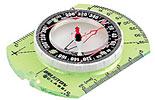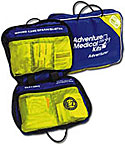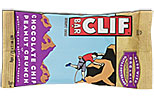While a comprehensive hiking or backpacking list depends on many factors (season, climate, terrain, distance, activities, and personal preference), certain outdoor gear is considered essential whether you’re heading off on an extended backcountry bushwhack or exploring the trails in your local woods.
For safer and more prepared front and backcountry travel, make sure you have the appropriate gear from each of the ten essential systems listed below.
1. Navigation
While the 10 essentials can vary depending on the trip you’re taking and whom you ask, a detailed topographic map and compass have been at the top of the list since its 1930s debut by The Mountaineers club. Now, navigation tools may also include a GPS receiver or altimeter, but those are in addition to a map and compass, which never need batteries and work even in dense tree coverage. Of course, these tools only work if you also have the know-how to use them. Consider signing up for a navigation course.
- Store your topo map in a ziplock or other protective case or waterproof covering.
- A compass with a sighting mirror works as a signaling device in an emergency.
2. Sun Protection
Sunglasses, sunscreen (for skin and lips), and appropriate clothing is necessary for sun protection year round, but is especially important when on water, ice, snow, and at higher altitudes. The higher you go the more ultraviolet rays you’re exposed to, increasing your risk of serious sunburn and skin damage, including cancer.
Sunglasses protect your corneas from ultraviolet light year round. Sunglasses, glacier glasses, and goggles also can help prevent snow blindness from sunlight reflecting off snow.
Sunscreen should be at least 15 SPF (though 30 is preferable), block UVA and UVB rays, and be applied anytime you go outside, even on cloudy days. Reapply frequently, including lips, particularly if you’re sweaty or wet.
Clothes supply varying degrees of sun protection depending on their material, weave, color, and moisture content (a wet, cotton T-shirt is practically useless). Some clothes are treated to absorb more UV radiation and come with specific UPF ratings, which can be useful for desert hikes and other very sunny treks.
Tips: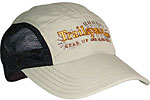
- Carry a backup if you rely on contacts or prescription glasses.
- Carry an extra pair of sunglasses for group outings.
- Fashion emergency eye protection from cardboard or cloth cut with small slits.
- Wear a cap or brimmed hat to shield your face.
- Don’t forget to cover your neck.
3. Insulation (extra clothing)
You checked the weather forecast before you left the trailhead, right? Even if it calls for clear skies and warm temperatures down below make sure to pack at least an extra layer, usually including wind and/or rain gear. Weather can change quickly, especially above tree line.
What you bring will depend on the season and outing and could range from a raincoat and long underwear tops and bottoms in summer to an extra insulated jacket, pants, gloves, and hat or balaclava in winter. No matter the season, avoid cotton, which loses its insulating value when wet.
Still not sure what to bring? Mountaineering: The Freedom of the Hills suggests you ask yourself this question: “What is needed to survive the worst conditions that could be realistically encountered on this trip?”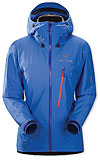
Tips:
- Extra socks can be used on feet and hands.
- Don’t judge by how you feel hiking uphill; you’ll cool off once you stop moving.
- Anticipate whether you’re likely to warm up or cool down and adjust layers in advance; your clothes will stay drier and your temp better regulated.
4. Illumination
It was supposed to be a short day hike with you at home before dinner, but somehow you found yourself out after dark. A headlamp or flashlight can make the difference between an inconvenient nighttime walkout and an emergency situation.
Headlamps are widely preferred by backcountry travelers for their hands-free design, compact size, and light weight. Even on short day hikes a light should be carried; small emergency ones can be easily stashed in a pack. Always bring spare bulbs and batteries that fit your model of light.
- A light can be used as an emergency signaling device; some have a strobe option.
- You can carry fewer extras if your light, camera, and/or GPS receiver use the same batteries (just be sure your headlamp and GPS won’t die at the same time).
5. First-Aid Supplies
First-aid kits range from the basic, suitable to treating blisters and minor cuts on a day hike, to expedition-worthy kits geared toward extended travel and large groups. You can make your own or buy a pre-packaged one, but at a bare minimum you’ll want: bandages in various sizes, gauze pads, disinfectant, over-the-counter pain medication, blister treatment, and any prescription medications.
Any first aid kit is useless without the knowledge to use it. Consider taking a wilderness first aid course and periodically brush up on your skills. Even if you’ve already passed a course, a small first aid guide inside your kit will help you—and your trip partners—deal appropriately with medical emergencies.
- Personalize your first aid kit to the individual medical needs of you and your party.
- Include feminine hygiene supplies if your group includes women.
- Include a pencil and paper.
- Store all first-aid supplies in a waterproof container or pouch.
6. Fire
Being able to start and sustain a fire, even in wet, cold, and windy conditions, is essential. A fire can help prevent hypothermia by providing heat for survival, allow you to make a hot drink, illuminate surroundings, act as a signal, and boost morale. Because fire starting is so important, but can be difficult to do in emergency conditions, especially if you’ve never practiced, you may want to carry more than one type of fire starter for back-up systems.
Windproof pocket lighters are easy to use, but don’t dismiss the value of having waterproof, windproof matches. A fire starter, as the name implies, helps ignite wet wood quickly. You can buy commercial fire starters or make your own from lint or cotton balls soaked with Vaseline. Store any matches and fire starters (even water- or storm-proof ones) in a waterproof container.
Tips: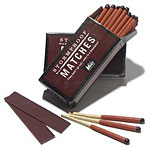
- As their name implies, strike-anywhere matches don’t require a special striking surface; safety matches do, limiting their usefulness.
- Don’t rely on flimsy packs of matches.
- Know how to build a sustainable fire beyond the first step of lighting the tinder.
7. Repair Kit and Tools
A pocket knife or multi-purpose tool can be used to repair broken gear, cut rope, prepare food, remove splinters, assist in first aid, and tackle other unforeseen challenges. Multi-tools include a range of implements beyond a blade—screwdriver, awl, pliers, and scissors—but each tool means more weight. You don’t need three screwdrivers, two wire strippers, and a corkscrew. Choose a multi-tool with a good knife and only the implements you’d reasonably expect to use.
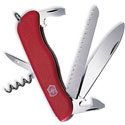 Tips:
Tips:
- Wrap duct tape, the all-purpose fixer, around a water bottle.
- Zip-ties are small and light and can be useful for gear repairs.
- A sturdy sewing needle and thread, or even dental floss, can help you repair critical gear in the field.
- Consider carrying a maintenance and/or repair kit for stoves and other gear on longer expeditions.
8. Nutrition (extra food)
Even on day hikes, bring along extra food, like energy bars. That’s in addition to adequate food supplies for your outing. Your group may move slower or eat more than expected. For overnight trips you’ll want an extra day’s worth of food. Extra food should be easy to prepare, store well, and be high energy.
- Hungry people can be cranky people. Don’t skimp on snacks.
- Choose foods you and your partners enjoy.
- Carry out all trash and food scraps.
9. Hydration (extra water)
Carry enough water per person and know where water sources are located on your route. A general rule of thumb is to have 3 to 4 liters (or 1 gallon) of water per person per day. The amount of water needed varies widely though, based on factors like temperature, humidity, and personal fitness and exertion levels.
Water availability is another factor. A water filter, purifier or chemical treatment (like iodine tablets) will allow you to treat water on the trail and carry less on your back. Always treat water, even if it looks clean, unless you want to experience Giardia or other unpleasant bugs.
Tips:
- Drink your fill and top off water bottles before starting out from the trailhead.
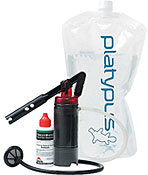
- Leave extra water in the car for your return.
- Monitor hydration through urine output—volume, clarity, and frequency should remain normal. Clear and copious is a good sign.
- On longer, more strenuous hikes and backpacks, sports drinks and gels help replace electrolytes.
- Dry air dehydrates you faster in winter.
- Have a way to melt snow for water in winter conditions.
10. Emergency Shelter
Shelter is a new addition to the classic 10 essentials list and what you carry will depend on the season and conditions. If you’re backpacking, you’ll probably already have a tent, bivy, or tarp, but even on day hikes you need to be able to fashion a shelter from rain, snow, and wind.
Consider carrying an ultralight tarp, emergency blanket, or lightweight emergency bivy sack. In winter conditions, emergency shelter becomes even more important and may mean carrying a four-season bivy or small tent, even on day outings.
- Each person in a large group can carry a heavy-duty plastic trash bag.
- In winter, know how to safely build a snow cave.
11. Common Sense
You’ve packed up all of your necessary gear, told someone where you were going and when you’d return, and are ready to hit the trail. Don’t forget the most important item of all—your common sense. The most-technical and award-winning gear available won’t keep you safe if you keep climbing into an oncoming thunderstorm or get swept away trying to ford a storm-swollen stream. Respect your limits and abilities—and those of your entire group—and you will come back to enjoy many more outdoor adventures.
Extras
A signaling device, like a whistle or signal mirror, can help rescuers locate you if you get lost or hurt. The better you’re able to make yourself seen or heard, the better your chance that a search and rescue team will find you. Make sure kids know that whistles are for emergencies only.
Don’t depend on a cell phone or other communication device for rescue. However, a cell phone or locator beacon may allow you to alert others if you’ll be late or can help search and rescuers locate you. Keep your cell phone off until you need it though, and reserve it for emergencies only.
Remember the insect repellent.
Editor's Note: To learn more about any of these essential systems or for in-depth information on all things mountaineering and backcountry travel, get a copy of Mountaineering: The Freedom of the Hills (now in its 7th edition, 2004), published by The Mountaineers.

 by Alicia MacLeay
by Alicia MacLeay
